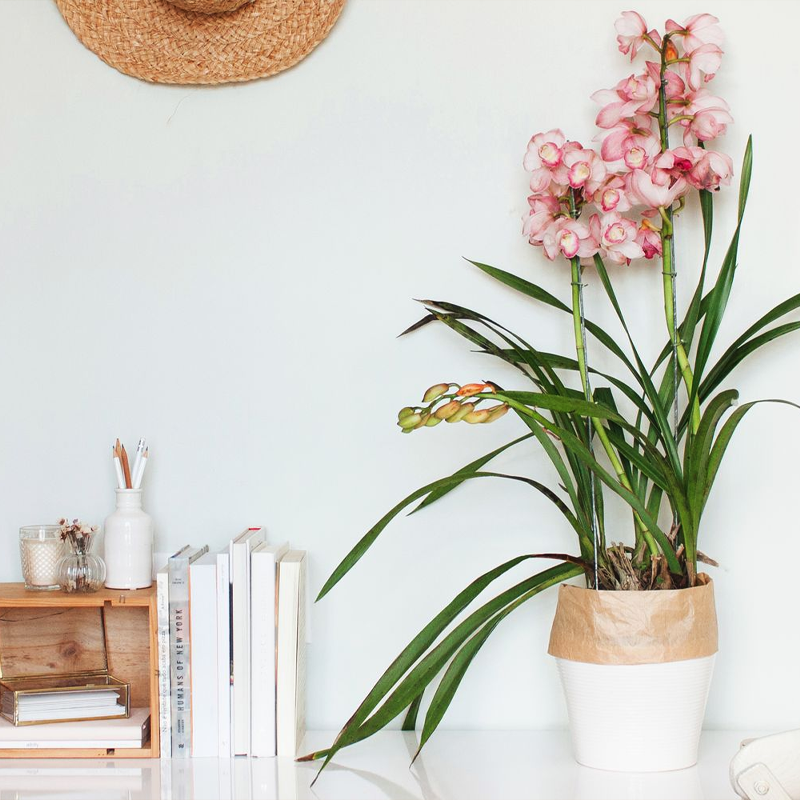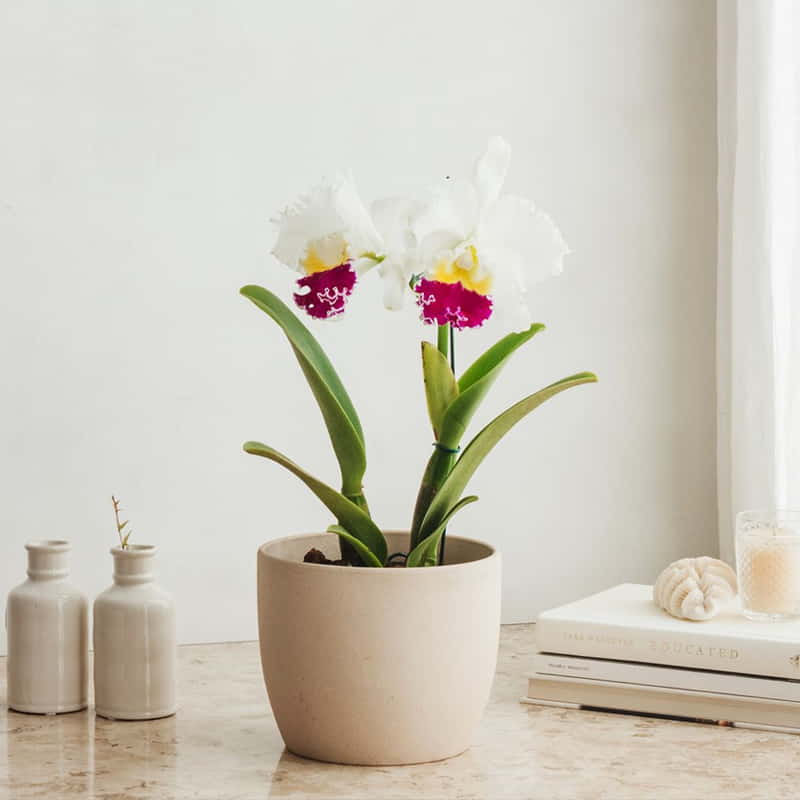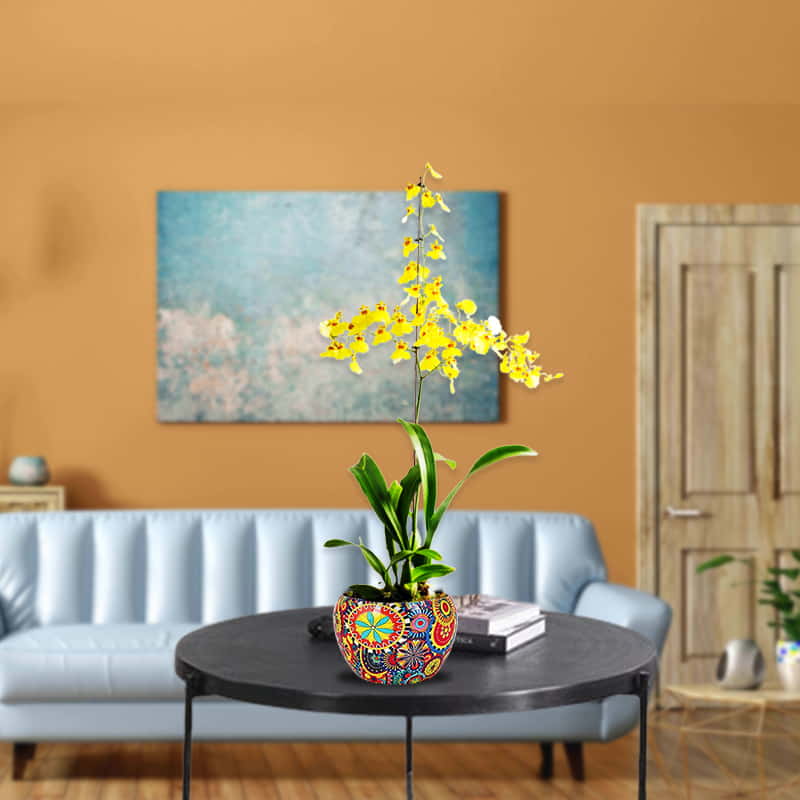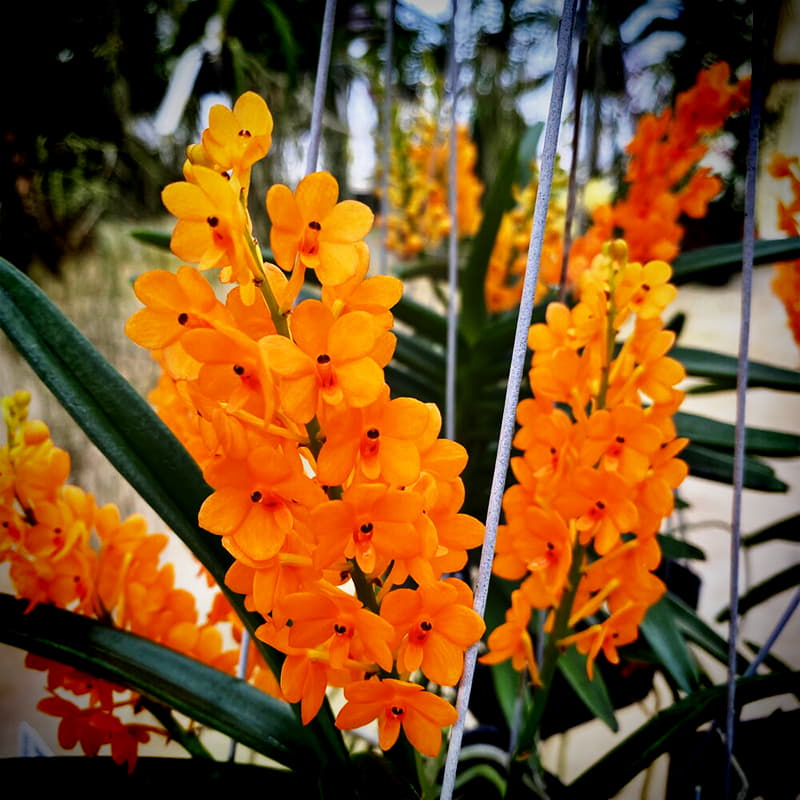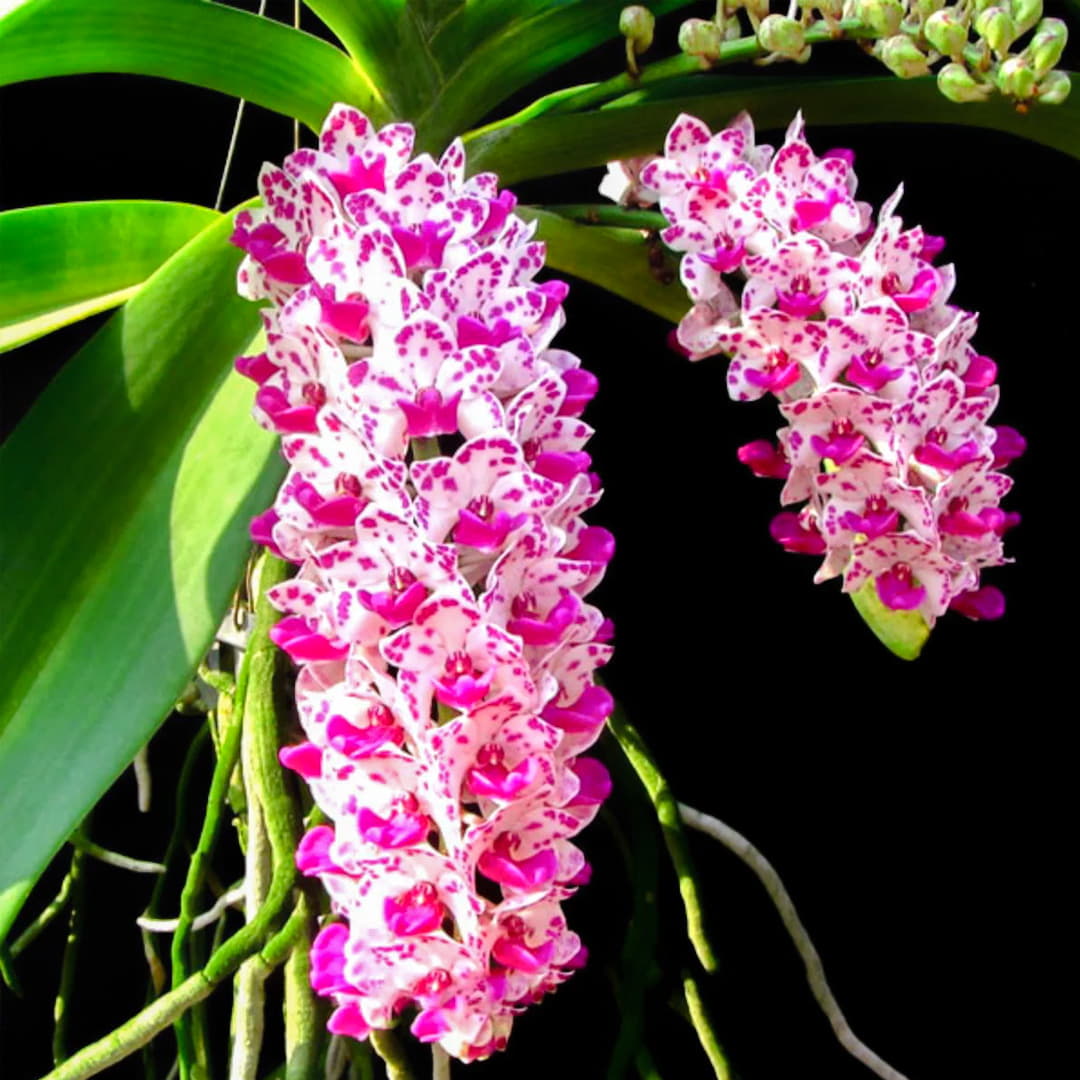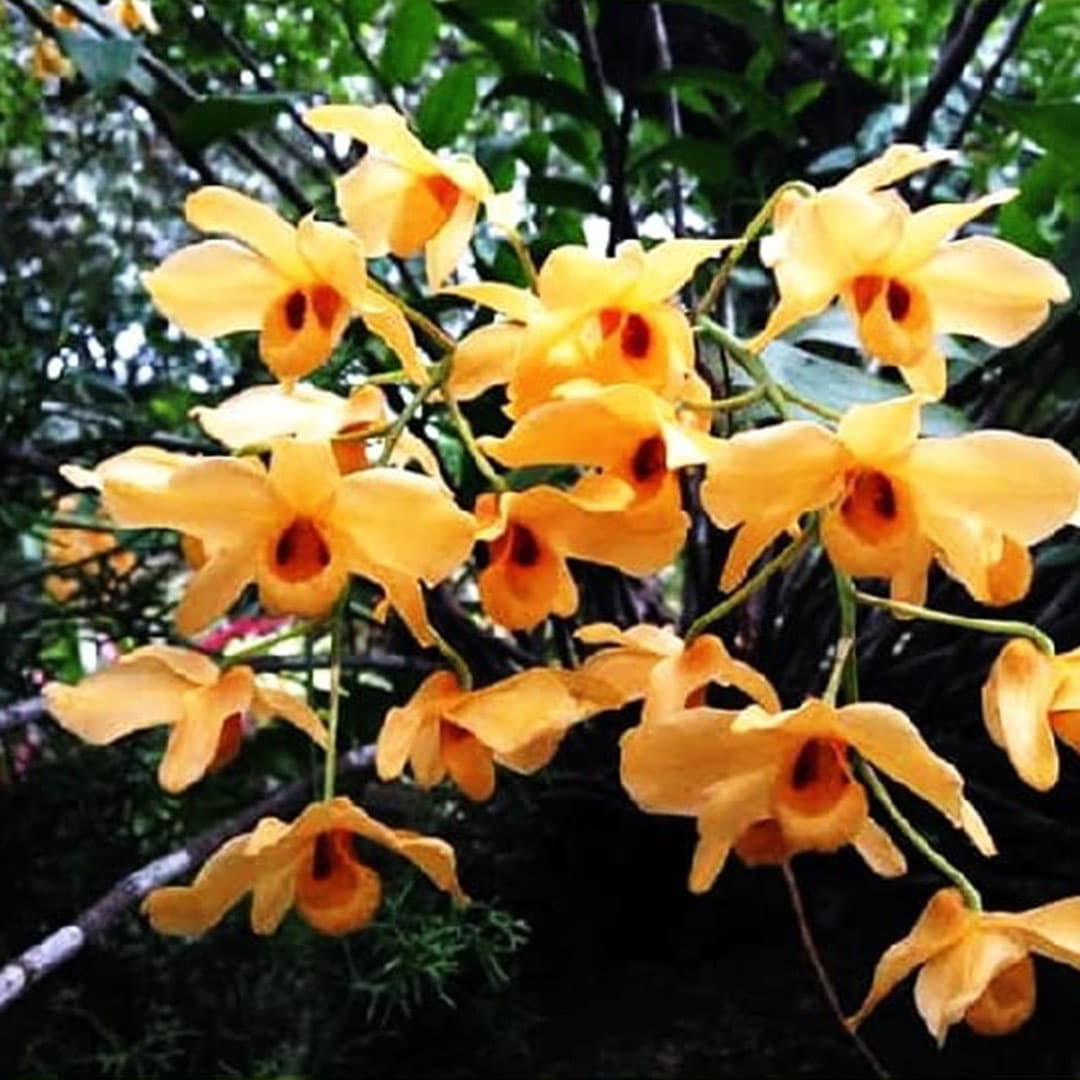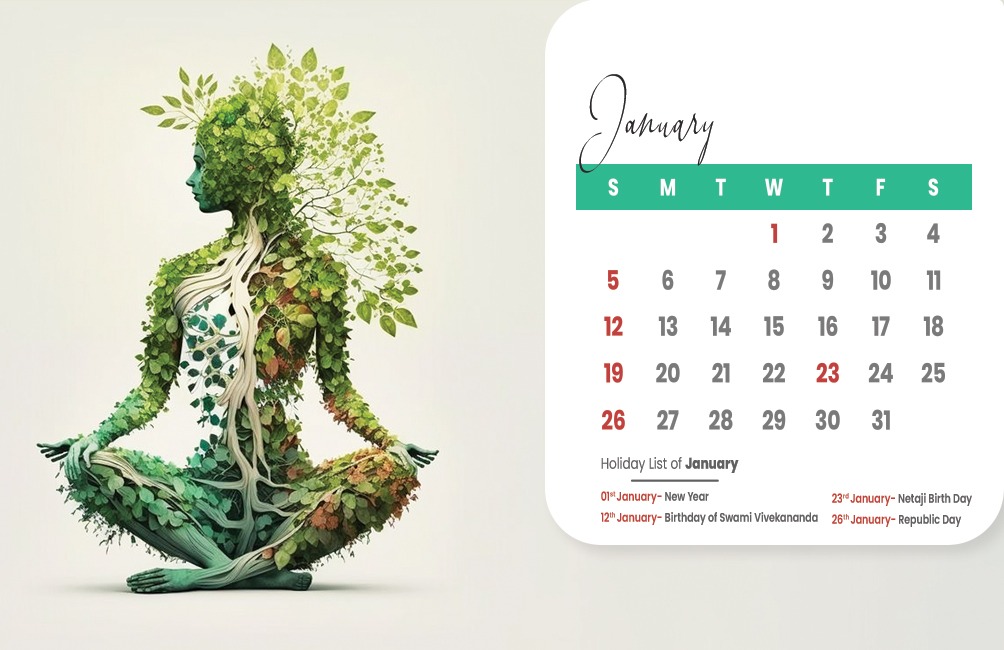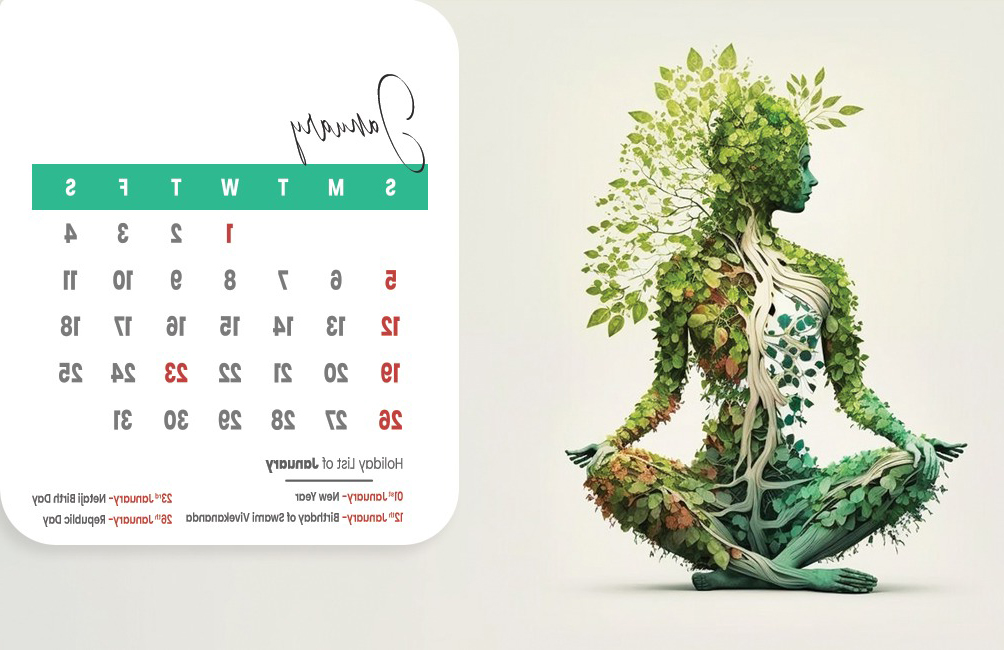Image(s) are for reference. Actual product might vary in some aspects like shape, size etc, from the one given in the image(s). However, we ensure what you get is close to the image(s) and of high quality. Our target is to deliver a healthy and well built plant. So relax after ordering and wait for an excellent delivery from Bharat Vumi that will bring smile on your face.
Package- A healthy Boat Orchid Plant (Without pot)
Plant Description:
Common Name- Boat Orchid
Scientific Name- Cymbidium Sp.
Family- Orchidaceae
Origin- China, India, Japan and southeast Asian countries.
Cymbidium orchid, commonly called as boat orchid, known for its beautiful, elegant showy, boat shaped flowers. The flowers come in a wide range of colours including white, yellow, green and pink. These orchids are native to Asia and they are popularly grown in ornamental gardens.
Growing Conditions-
1.Potting Mix-
2. Watering- Water the Cymbidium orchids thoroughly. Always
allow the potting mix to dry out partially before watering again. Avoid
overwatering. It is best to water the orchid in morning.
3. Temperature- Cymbidium orchids prefer a temperature range
between 15℃-27℃ in day
time and cooler temperature during night-time. Provide good ventilation to
ensure air circulation around the plants. These orchids are more tolerant to
cooler temperature than Oncidium species.
4. Humidity- Cymbidium thrives in moderate to high humidity
levels, around 50%-70% Mist the leaves occasionally during hot and dry period.
They can tolerate slightly lower humidity level than Oncidium species.
5. Light Requirements-Cymbidium orchids prefer filtered
sunlight rather than harsh direct sunlight. They can tolerate morning and afternoon sun.
6.Fertilization- Regular feeding with a balanced orchid
fertilizer ( Seaweed liquid Fertilizer) is important for the growth and flowering of this orchid species. Apply
a diluted orchid fertilizer every 2-3 weeks during spring and summer. Reduce
fertilization during winter as the plant requires a rest phase.
7. Flowering-
8.Important Diseases-Orchids can be susceptible to various
diseases-
a. Bacterial soft and brown rot- This disease occurs when
the orchid plant is exposed to excess moisture. Symptoms include water soaked
mushy lesions on leaves, stems and roots.
b. Bacterial Brown spot- Symptoms include brown spot on
leaves, dark brown lesions on pseudobulbs and stems which become soft and mushy
in severe cases.
c. Black rot- Symptoms include black necrotic lesions on
stem, leaves and flowers.
d. Fungal Rot-Leaves and pseudobulbs become yellow,
shrivelled, thin and twisted and new growth is progressively smaller. in severe
condition plants become wilted and death of the plant takes place.
e. Fungal Wilt- Infected leaves become thin, yellow,
shrivelled or wrinkled andeventually die.
f. Leaf spot- Leaf spot can be seen as burning of leaf tip
or dark brown patches or circular, irregular spots or dark elongated purple
lesions.
* Avoid overhead watering or splashing water on leaves,
maintain proper drainage and improve air circulation around the orchid plant to
prevent the spread these diseases. Isolate or discard severely infected plants.
Spray orchid antifungal to control the diseases.
9.Important Pests-
Mealy bugs- Mealy
bugs are a devastative pest of most of the orchids. These small cottony insects
attack the orchid plant and suck the sap from leaves and pseudobulbs and can
cause yellowing of leaves.
Aphids- Aphids causes leaf curling, stunted growth and
produce honey dew which can lead to growth of sooty mold.
Thrips- Causes distorted growth, silvery streaks on leaves
and deformed leaves.
Slugs and Snails- They feed on tender twigs, leaves and
flowers, leaving irregular holes and trails of slime.
Mites- Feed on the underside of the leaves and form webbing
structure.
*Good sanitation and elimination of weeds will help to
prevent insect infestation. Apply neem oil or spray malathion to get rid of
White fly, mealy bug and aphids. Use copper tape to prevent the entry of slugs
and snails near the plants.
10. Pruning and Maintenance- Pruning of Cymbidium orchids is
minimal and primarily done to remove old flower spikes, dead or damaged parts.
Avoid excessive pruning as it can hinder plant’s ability to grow and bloom.
| Type |
Evergreen, Perennial Flowering Plant |
|---|---|
| Planting Time |
Spring and summer |
| Potting Mix |
Royal Orchid potting mix- Pine Bark, Charcoal, Pumice Rock, Leca Balls, Orchid Antifungal and Orchid Fertilizer |
| watering |
Watering can be done in the morning when the potting mix is partially dry |
| Temperature |
Cymbidium orchids prefer a temperature range between 15℃-27℃ in day time and cooler temperature during night-time. Cymbidiium is much more cold tolerant orchid than many other orchid species. |
| Humidity |
ymbidium thrives in moderate to high humidity levels, around 50%-70% |
| Light Requirements |
prefers filtered sunlight |
| Fertilization |
Once in every 2-3 weeks with a balanced orchid fertilizer(Seaweed Fertilizer) |
| Flowering |
These orchids generally blooms in winter and springFlowers can last up to 3 months. |
| Important diseases |
Black rot, leaf spot, fungal wilt, bacterial soft and brown rot etc. |
| Important Pests |
Aphids, Mealy bugs, Mites, Snails and slugs, Thrips |
| Pruning |
Pruning of Cymbidium orchids is minimal and primarily done to remove old flower spikes, dead or damaged parts. |
| Dormancy Period |
Do not have strict dormancy period, They only slow down the growth. |
| Propagation |
Propagation of Cymbidium orchids can be done through division and back bulb propagation, keikis and tissue culture. |


